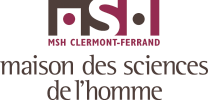Scientific axes
Axis 1: Territories, environment, adaptation
The goal of this axis is to examine the long-term relationships between societies and their environments, from the Holocene period up to the present day. There are two main objectives: to document the socio-environmental histories of regions, and to put the current dynamics governing the processes of sustainable and harmonious development (environmental, economic, social, cultural, etc.) of regions into perspective, drawing on elements from theoretical and applied thinking, focusing on transition mechanisms and the adaptations put in place by regions and societies. Of particular interest is how cultural factors affect the organization of regions and the role played by the actors' depictions of these spaces. This is all viewed through the prism of transition and adaptation, encouraging a multilevel spatiotemporal approach. The IntelEspace platform is highly important to this axis, in particular to the following fields of study:
The long-term coevolution of societies and the environment in order to highlight the impact of environmental changes on development strategies put in place by societies and the responses of these environments to human interventions, with a primary focus on archeological and paleoenvironmental research. Anthropogenic impacts and environmental risks are assessed to investigate the influence of current changes to variables that control environmental dynamics for future trajectories of evolution, including risk escalation.
The interdisciplinary analysis of the development processes of regions – economic, social or environmental – particularly rural spaces, mountainous areas and small cities. Analysis of the spatial dynamics of regional development is undertaken via collaborative work involving geographers, economists, historians, architects, and agronomists.
How regions are represented in diverse works, including maps, and the role of representations in regional management and our perception of the environment. Emphasis is placed on the spatial dimension of cultural movements and achievements (literature, drama, music, etc.) and the methodological contribution of this dimension to the analysis of such phenomena.
This axis is centred on seminars, as well as scientific events and interdisciplinary programmes.
Supervision: Sophie Chiari and the steering committee for the axes.
Axis 2: Ruptures, revolutions, innovation
This axis concentrates on the study of sudden and radical changes leading to the rupture in coherence of a global system. This broad field is studied on the level of individuals and social groups, and from verious perspectives including political, social, esthetic, psychological and environmental ones. While the earliest definition of the word “revolution” refers to a cosmic logic of perpetual movement, the modern definition contrasts with these concepts of cyclicity and linearity, instead looking at deflection from norms and the establishment of a new order. Coined as early as the 16th century as a synonym for “sudden change, disruption” on an individual level, the word began to be used to refer to political ruptures in the 17th century, but only fully took on this meaning in the political context of the second half of the 18th century. Later, “revolution” was associated with any sudden change occurring within human society, such as the industrial revolution, surrealist revolution, religious revolution. While the astronomical revolution corresponds to the methodical completion of a trajectory, the modern revolution refers to a rupture or a deviation/deflection. It heralds the establishment of a new order. Revolution can thus be related to the moment when an individual or a significant part of a social group stop believing in the global coherence of the world they live in. It corresponds to the moment when they start to question the systems of dominant values, norms, legitimacies, hierarchical and esthetic landmarks, even the perception of time and different forms of transcendence, calling into question mankind's place in the universe.
The rupture provokes a backlash which contributes to reshaping, reorganizing, and giving meaning to a recent past by defining it in contrast to the rupture itself. The political, scientific or technological revolution can thus be more easily identified by the actors. However, other forms of revolution (such as esthetic, religious, linguistic, ecological and pedagogical) are less visible in the short-term, although they can be very deep-reaching, and generally interact with one another. Revolution is also studied via its effects over time. It dismantles an existing order and triggers the emergence of a new one, of short or long duration. This process introduces innovation into revolution. It is a way of questioning the notion of a global system, on the scale of a society, an individual, a natural site, etc., and the elements (always of a temporary nature) that condition its balance, or tip it towards rupture. This research is connected to the MSH computing platform, which optimizes the methodological and epistemological potential provided by the “digital humanities” (databases, corpuses, graphic exploitation of data and related mathematical tools).
This axis is centred on seminars, as well as scientific events and interdisciplinary programmes.
Supervision: Sophie Chiari and the steering committee for the axes.




